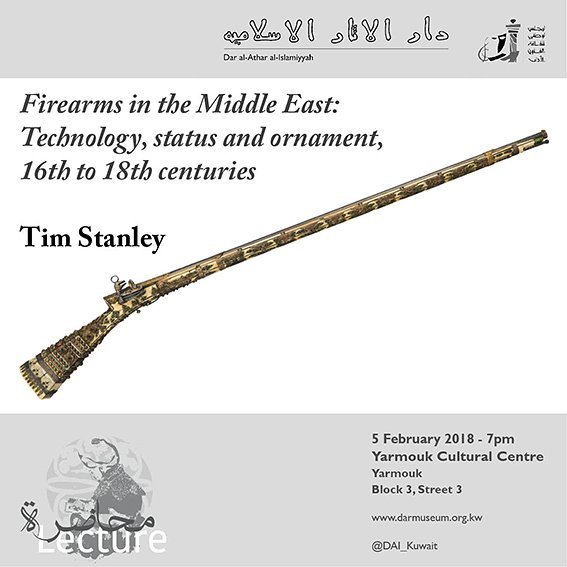Tim Stanley
Dr Tim Stanley is senior curator for the Middle Eastern collections at the Victoria and Albert Museum in London. He has been responsible for a number of projects, including the Jameel Gallery, which is the Museum’s main display for the Islamic Middle East. He has curated travelling exhibitions, including Palace and Mosque: Islamic Art from the Victoria and Albert Museum and Masterpieces of World Ceramics. He developed the Jameel Prize and has curated or co- curated four editions of the Prize and the accompanying exhibition of work by the finalists. He has published on a range of topics connected to Islamic art and Ottoman culture, from book collecting in the 15th century to the history of Ottoman hand-held guns.
Firearms in the Middle East: Technology, status and ornament, 16th to 18th centuries
In the collections of the Victoria and Albert Museum in London is a 17th century musket of a standard type, with a “miquelet” flint-based mechanism. Recent studies have shown how poorly the development and spread of this mechanism has been understood. Yet the V&A’s gun has much to tell us. It was upgraded with silver mounts in the reign of Sultan Ahmed III (1703–1730), and research has shown how these silver mounts reflect in a very precise way Ahmed III’s policy of modernising the Ottoman army in the aftermath of the Treaty of Passarowitz in 1718. The gun is a product of a series of changes that began in the Long War between the Habsburgs and the Ottomans and were still progressing a century later.
